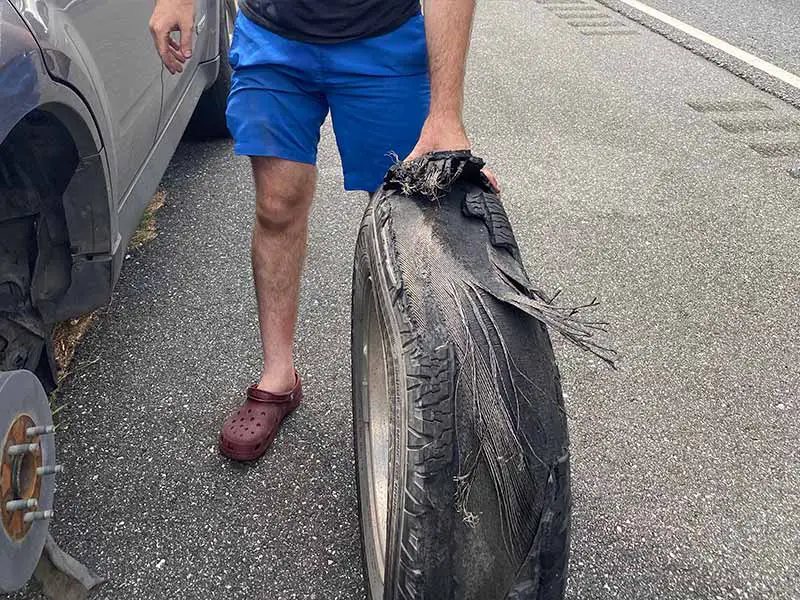Ever been cruising down the highway when suddenly you see smoke billowing from one of your tires? That alarming sight, paired with the unmistakable scent of burning rubber, can turn a joyride into a nerve-wracking ordeal in seconds. But what’s causing this, and what should you do?
Why Is My Tire Smoking?
A flat tire or extremely low tire pressure is often the main reason for tire smoke. Other potential issues that can also lead to this alarming situation are overheating brake pads, a seized brake caliper piston, faulty wheel bearings, or even an inadvertently engaged hand brake.
In this article, we’ll delve into the world of tires, exploring what might cause them to smoke, and most importantly, what to do when you find yourself in such a situation. We’ll debunk common myths about tire smoking, provide valuable tips for recognizing brake and tire problems, and offer advice on how to prevent such incidents.
Let’s take a closer look.
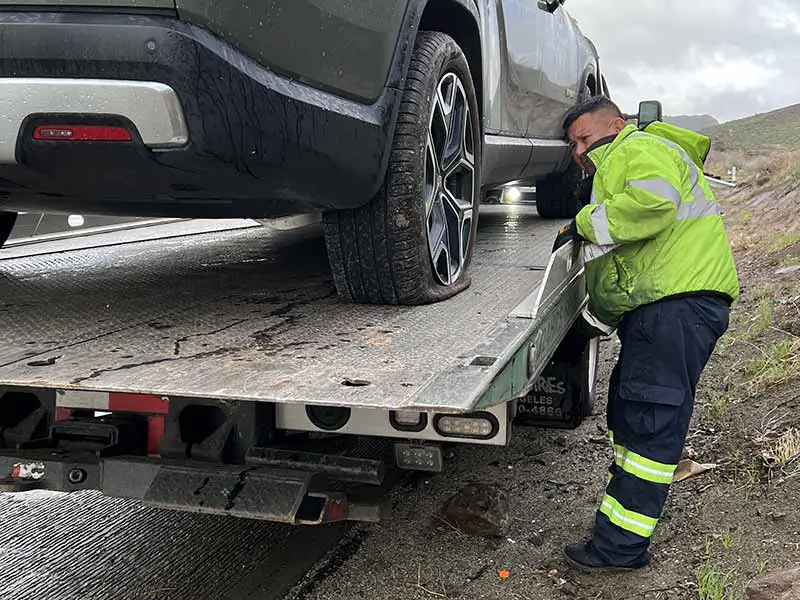
What Causes Tire Smoking?
The most common reason for tire smoke is actually a flat tire or extremely low tire pressure. When a tire is flat or severely underinflated, friction between the tire and the road increases dramatically. This excessive friction generates heat, which can cause the tire to smoke. Over time, this can lead to serious tire damage, and in severe cases, a blowout can occur.
Low profile tires or run-flat tires when used without a functioning tire pressure monitoring system (TPMS) can be difficult to feel when flat. I personally had an older Toyota MR2 without TPMS and a flat rear tire and didn’t realize it until I saw smoke coming from the rear through my mirror. At first I thought the motor had a problem. While I was deciding whether I thought I could make it to work that morning or not, the rear end suddenly swung around but I managed to save the car from going off the road. When I pulled over I found that the tire had split down the middle and wrapped around the rim!
Other Potential Troublemakers
While a flat tire or extremely low tire pressure is often to blame, other issues can also contribute to tire smoke.
- Overheating Brake Pads: Brake pads create friction to slow your vehicle. But if they’re worn out or overheating, they can generate excessive heat, which can cause smoke that looks like it’s coming from your tires.
- Seized Brake Caliper Piston: The brake caliper piston plays a crucial role in your car’s braking system. But if it seizes up, it can create a lot of heat and potentially cause smoke.
- Faulty Wheel Bearings: The wheel bearings let your wheels spin freely. But if they’re damaged or worn out, they can create friction, heat, and potentially, smoke.
- Hand Brake Engagement: Here’s one you might not think of—a hand brake that’s been left engaged while driving can cause the brakes to overheat and smoke.
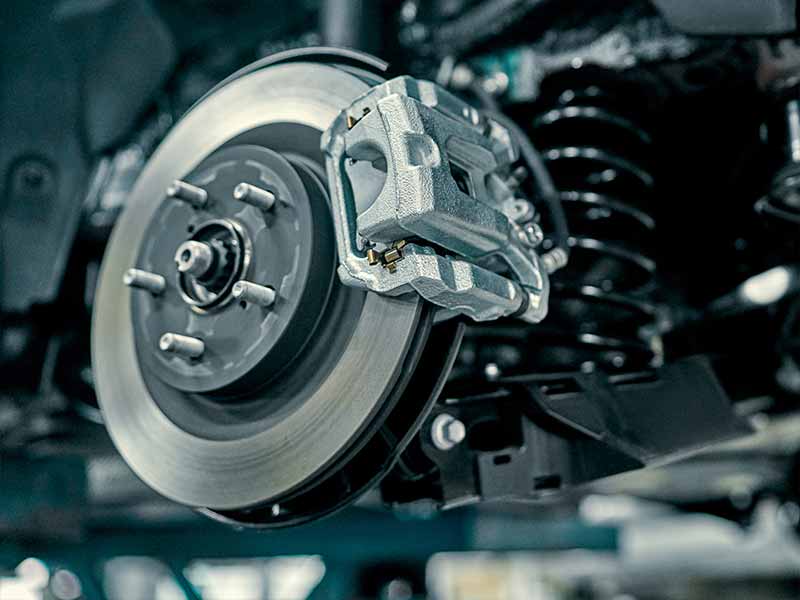
Is Tire Smoking Ever Normal?
Before we get into the nitty-gritty of what to do when your tire smokes, let’s take a second to talk about whether tire smoking is ever a normal thing. I mean, we’ve all seen those cool movies with cars doing burnouts and smoke billowing from the tires. So, is that okay or what?
When Tire Smoke is Just Showbiz
In certain situations like car races or stunts, you’ll see tires smoking—and that’s completely normal. When a driver does a burnout (spinning the tires while the vehicle stays in place), the friction between the tires and the road surface can cause smoke. It’s done for effect, and those tires are designed to handle it.
When Tire Smoke is a Red Flag
For the average driver, however, smoke coming from tires is usually a cause for concern. It can be a sign of the problems we discussed in the previous section, like brake issues, faulty wheel bearings, or improper wheel alignment.
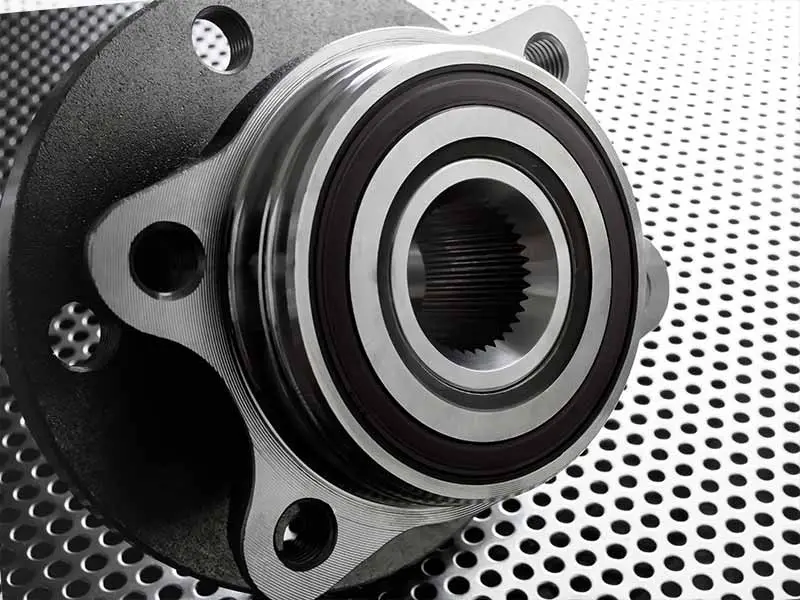
How to Recognize Brake and Tire Problems
Alright, it’s time to talk about signs and symptoms. Just like you can tell when you’re catching a cold, there are signs that your car might be under the weather, too. Here’s how to recognize the clues your car might be giving you that there’s a problem.
Keep An Eye On The Hand Brake Warning Light
Most vehicles have a little light on the dashboard that lights up when the hand brake (also known as the parking brake) is engaged. But did you know that if it comes on while you’re driving, it can signal trouble? It might mean that your brake pads are worn out or that there’s a deeper issue with your braking system.
Feel For Changes In The Brake Pedal
You know how your brake pedal normally feels under your foot, right? If you notice a change—like if it feels soft or spongy, or if you have to push it down further than usual—it could be a sign of brake problems.
Watch For Smoke Or Smell Burning Rubber
Okay, this is a big one. If you see smoke coming from your tires or if you smell burning rubber, you should take it seriously. As we’ve discussed, these can be signs of various issues, from problems with your brakes to faulty wheel bearings to driving on a flat tire.
Notice If Your Car Is Shaking
Last but not least, if your car starts to shake, especially when you’re braking, it’s another sign that something’s not right. It could be a symptom of various issues, from worn-out brake pads to problems with your wheel bearings or alignment.
By keeping a watchful eye (and nose) out for these signs, you can catch potential issues before they turn into big problems.
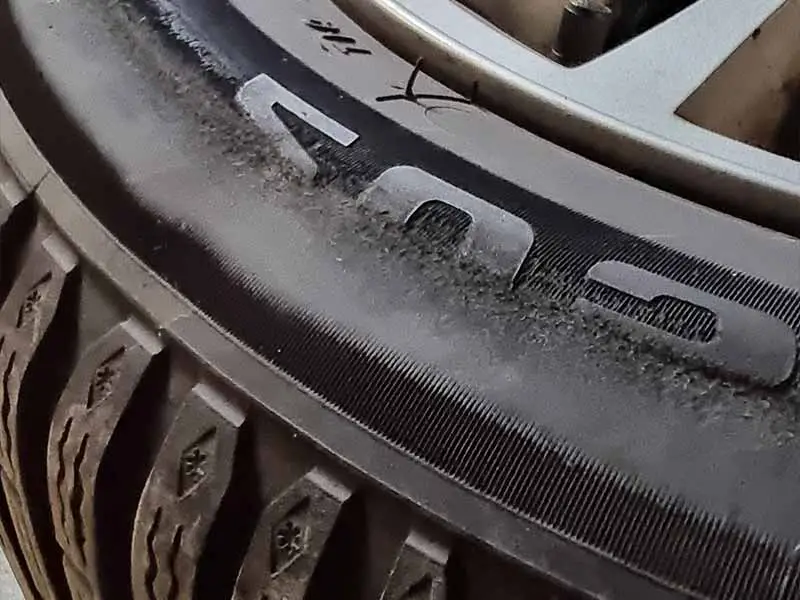
What to Do If Your Tire is Smoking
Alright, let’s get serious for a moment. You’re on the road, and you notice smoke coming from your tires, or you catch a whiff of that burning rubber smell. It’s a scary situation, but don’t panic—I’m here to help. Here’s what you need to do:
Step 1: Pull Over Safely
The first thing to do is find a safe place to pull over. Remember to signal your intentions, and watch out for other road users. Don’t worry about reaching your destination right away—your safety is paramount.
Step 2: Assess the Situation
Once you’ve stopped, it’s time to figure out what’s going on. Is the smoke coming from one particular tire? Can you see anything obviously wrong, like a flat tire?
Remember: Be careful if you touch your tires or wheels—they might be hot!
Step 3: Call for Professional Help
Even if you’re handy with cars, it’s usually best to call for professional help in this situation. Reach out to roadside assistance or a local mechanic. They’re equipped to handle this kind of situation and can help you get back on the road safely.
Step 4: Don’t Drive on a Flat Tire
I know it’s tempting to drive a short distance on a flat tire, but trust me, it’s a bad idea. Driving on a flat can cause serious damage to your tire and wheel—and it can even be dangerous.
In Case of Emergency
But what if you’re in an emergency situation and absolutely must drive? Well, if there’s no other option, drive slowly and carefully to the nearest safe location. But remember, this should be a last resort.
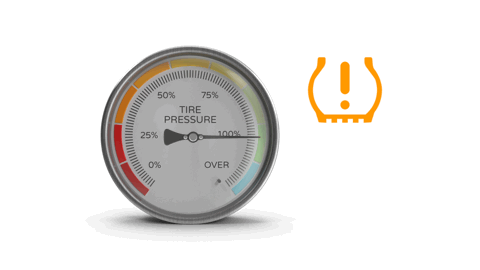
Preventing Tire Smoking: Tips and Tricks
Let’s wrap things up with some tips and tricks to help you prevent tire smoking in the first place.
The Importance of a Tire Pressure Monitoring System
In our modern world of low-profile and run-flat tires, it can be especially tricky to recognize when your tire pressure is dangerously low. These types of tires, with their shorter, stronger sidewalls, don’t give the same telltale signs of low pressure that traditional tires do. You might not feel the usual squishiness or sluggishness while driving, leading you to believe all is well, when in fact, your tires are screaming for air.
That’s where your tire pressure monitoring system (TPMS) comes into play. This clever bit of tech keeps a constant eye on your tire pressure, alerting you when it drops below a safe threshold. Ensuring your TPMS is in good working order is crucial—it’s like having an early warning system for your tires. So, make it a habit to check your TPMS regularly. Remember, keeping your tire pressure in the sweet spot is key to avoiding tire smoke and other potentially serious tire problems. Don’t underestimate the importance of this often overlooked safety feature!
Regular Maintenance is Key
The best way to prevent problems with your tires is to keep them in good shape. This means regular check-ups and maintenance. Keep an eye on tire pressure, rotate your tires regularly, and replace them when they’re worn out.
Don’t Ignore Your Brakes
Remember, brake problems can cause tire smoking. Make sure to check your brake pads regularly and replace them if they’re worn out. Also, if your brake pedal feels different or if you notice any other signs of brake problems, get it checked out.
Watch Your Wheel Bearings and Alignment
Faulty wheel bearings and improper wheel alignment can lead to tire smoking. Regular maintenance checks can catch these problems before they cause trouble.
Avoid Driving on a Flat Tire
This one is simple: if your tire is flat, don’t drive on it. It can lead to tire smoking and can cause serious damage to your vehicle.
Drive Sensibly
Last but not least, the way you drive can help prevent tire smoking. Avoid hard braking, sudden acceleration, and other aggressive driving behaviors that can put unnecessary stress on your tires and brakes.
Resources
Below are some links you may find helpful when learning about tires
- Car maintenance 101: What to do when you get a flat tire – Metromile
- 7 signs that you need to pull your car over immediately – AAA
Final Thoughts
Tire smoke is not a normal occurrence for everyday driving. It’s a clear warning sign of underlying issues, which might include brake problems, faulty wheel bearings, improper wheel alignment, or even driving on a flat tire.
Understanding your vehicle and recognizing problems early on is crucial. Keep a watchful eye on the hand brake warning light and pay attention to any changes in the brake pedal’s feel. And, of course, always take note of any tire smoke or burning rubber smell.
If your tire starts smoking while driving, remember to pull over safely, assess the situation, and call for professional help. Avoid driving on a flat tire at all costs, as it could cause extensive damage to your vehicle and put you in a dangerous situation.
There’s a lot of misinformation out there about tire smoking. Understanding the reality behind these misconceptions will help you respond correctly if you ever find yourself in such a situation.
Lastly, remember that prevention is better than cure. Regular maintenance of your vehicle, especially your tires and brakes, can help prevent tire smoking incidents. Drive sensibly and keep your vehicle in good shape to ensure a smooth and safe journey.
Good luck and happy motoring.
